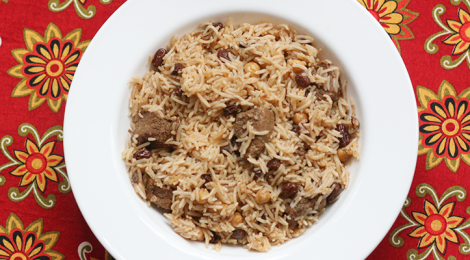
Chana Mewa Pulao
Chana mewa pulao- the absolute king of Peshawari Pulaos! A complete meal, much like biryani is in the south. And so grand! When I served it to some friends back in college, they really enjoyed the surprising burst of sweetness that the raisins brought to the very popular but rather ho-hum chana pulao. Chana pulao is extremely popular among Punjabis, but because I was used to chana mewa pulao, it always seemed to me like an impoverished relative.
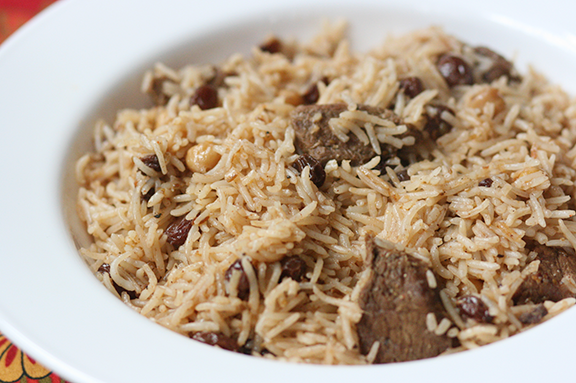
Chana Mewa Pulao- I always hear my (late) grandmother saying ‘chanra meva pulaa’ in Peshawari when I think of this pulao.
My mother in law tells me that it used to be the meal of choice for funerals, once upon a time in Peshawar, because of its convenience of being a one dish meal. You don’t really need anything with it, it’s great with raita, but rice goes very well with gravies, and I won’t say no to some koftay or chicken on the side!
You have to get used to the insert of the sweet flavor with the savory. I am… well, I grew up with it, but I think I’m able to enjoy the two in a number of dishes, like sweet-sour or sweet-spicy combinations in Asian cuisine, halwa and cholay with poori, and another Peshawari favorite, mixing zarda (meethay chawal) with pulao and topping the whole thing with a gravy like aloo gosht.
First of all, the best pulao is the one that has meat and is made in a meat broth. Add garbanzo beans and raisins to that and voila! A winning, very royal combination, that has only one real competitor: the Kabuli Pulao. I’ll get to that soon, in another post.
If you’re only into conventional flavors, then the raisins might seem off to you. But for Pishoris, it’s all about the raisins. The more, the better. We even have cousins who used to put extra raisins in the pulao and then serve more on the side!
And now, a word on the rice. You can use basmati rice, but the rice of choice for Peshawaris for pulao is sela. Sela, known in English as parboiled rice, is basmati rice that has had its husk removed by partially boiling it. The rice has a slightly yellowish-brown color, absorbs a ton of water, has an extremely long grain, much longer than basmati, and has a certain… scent… that can’t exactly be called aromatic.

Sela (parboiled) rice on the left and basmati rice on the right. You can see that sela has a yellowish color and a much larger grain. It also absorbs a lot of water while soaking.
It comes with the package, and we embrace it with all of its qualities, so let’s just say that even though the pulao masala kills most of it, there is still a slight lingering scent in the pulao. Now, to us, it adds to the character of the pulao, and nothing can give pulao the flavor that sela gives. That’s just the way it is. I’m just saying that for someone using sela for the first time, it might take a little getting used to.
I chanced upon sela in America when I accidentally brought home a bag of parboiled rice. I love using it for meat pulaos, and my husband, also a Peshawari, always says that he it reminds him of the daigi pulaos back in Peshawar. If you’re not feeling that ambitious, then feel free to try it with basmati rice!
The idea is to make a meat stock and to cook the rice in it to impart all that flavor into the rice.
Chana Mewa Pulao Recipe
Ingredients:
- 3 cups sela (parboiled basmati) rice
- 1 lb beef with bone/mutton
- ½ cup oil
- 2 small onions
- 2 small tomatoes/2½ tbsp yogurt
- 1 tbsp minced garlic
- 1 tbsp minced ginger
- A few sprigs of cilantro (optional- I love the herby aroma in the broth)
- 1 tbsp salt
- ½ heaped tsp red chillies
- 1½ heaped tsp cumin
- 2 tsp coriander powder
- 2½ tsp garam masala
- 1 16 oz can garbanzo beans
- 2 green chilies (optional)
- 1 12 oz box red raisins (2 cups)
Method:
- Soak the rice in a large bowl and a lot of water for 4-6 hours.
- Put the meat, garbanzo beans, salt and cilantro in a pot. Add 5 cups of water and bring to a simmer.
- Cover and cook for about 50 minutes or until the meat is melt in the mouth tender. Turn the heat off. I add the garbanzo beans so that they get really nice and tender too.
- Fry the onions and tomatoes in the oil until golden brown. Add the ginger, garlic, green chilies and all the spices.
- Take the cooked meat out with a slotted spoon and fry in the spices on medium heat for about 2-3 minutes, stirring carefully but frequently. The idea is for it to fry a little but not to let a hard crust form on it.
- Add the garbanzo beans and raisins and give it a few stirs.
- Measure out 6 cups of liquid, first using the meat broth, and then using water for the rest, and add it to the masala.
- Now, taste the broth. It should taste just a little too salty. Adjust the salt accordingly.
- Cover and bring to a bubbling boil.
- Drain the rice and add to the broth. Give it 1 or 2 light stirs to spread the rice evenly. From here on, do not stir the rice. Cook, partially covered on medium low heat until the liquid is level with the rice. First you will see bubbles forming on the surface and then you will see holes. As soon as you see holes, cover the pot, reduce the heat to the lowest low and cook for about 10-15 minutes. Turn off the heat. All the water should have evaporated, but the rice should not be sticking to the bottom, and should be tender. Now, carefully turn the rice over using a folding motion so as not to break the grains, so that the rice at the bottom of the pot does not overcook from the heat of the pot.
For trouble shooting tips relating to cooking rice, please see my Matar Pulao Post and my White Rice Post.
You can serve it with raita or any of your favorite gravies like koftay, chicken, or saag.
For all the latest updates, please ‘like’ Zabiha Bites on Facebook by clicking here.





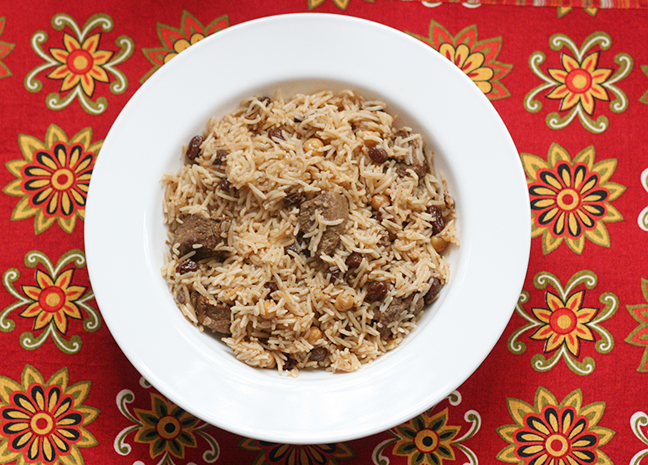
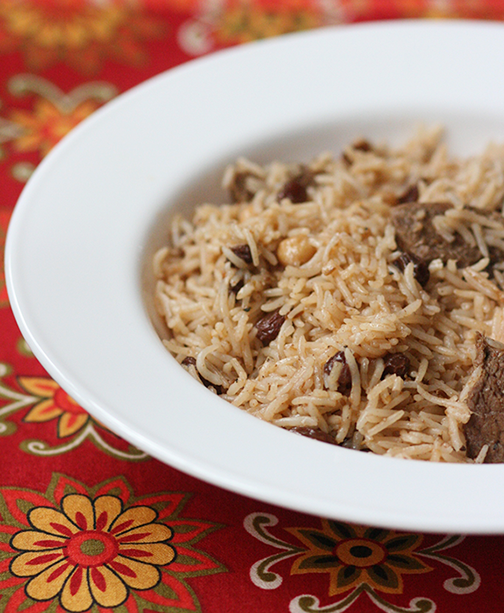
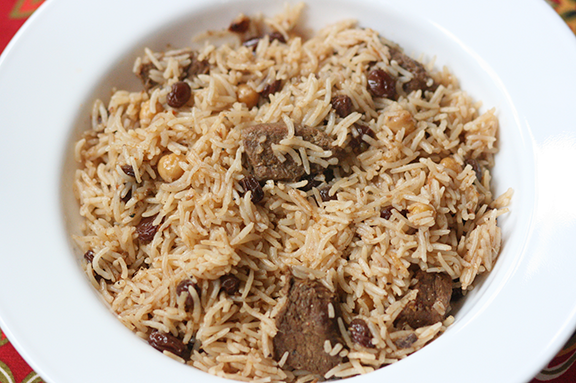
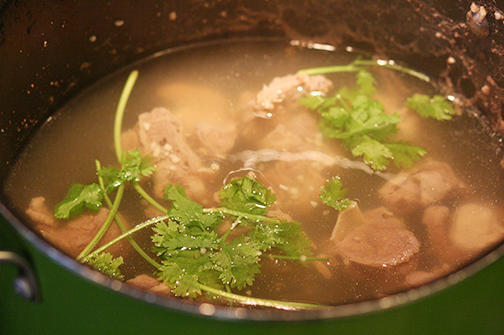
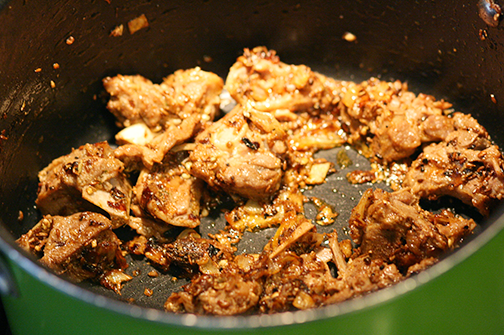
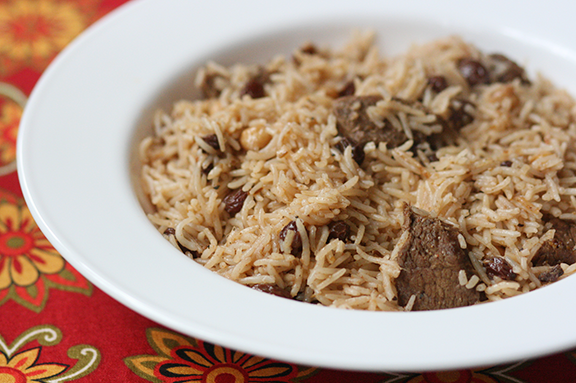
Behtareen, itne a6ee khane banane wali koi aurat ager ho to batana, main usse shadi kerne ko taiyar hoo.
Haha anyone can do it if they try. Even you.